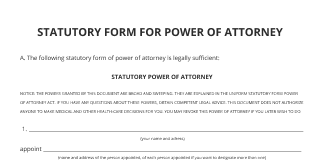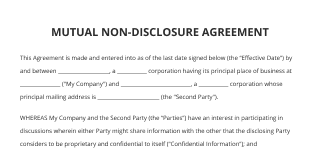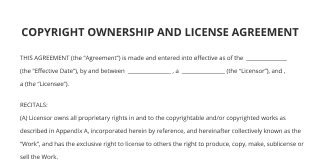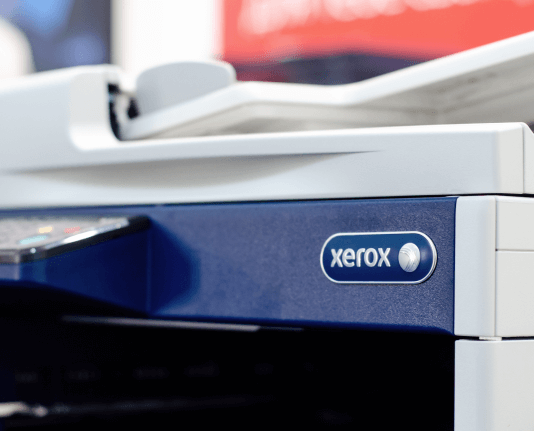Understanding Delivery Order Vs Invoice for Streamlined Transactions
Move your business forward with the airSlate SignNow eSignature solution
Add your legally binding signature
Integrate via API
Send conditional documents
Share documents via an invite link
Save time with reusable templates
Improve team collaboration
See airSlate SignNow eSignatures in action
Understanding Delivery Orders
A delivery order is a document that authorizes the release of goods to a specific individual or entity. It is typically issued by a seller or supplier and serves as a request for the delivery of goods to a buyer or recipient. Delivery orders are crucial in logistics and supply chain management, ensuring that the right products reach the right places at the right times.
In a digital document workflow, users can easily create delivery orders by preparing a template that includes essential details such as the item description, quantity, delivery address, and recipient information. This document can be filled out and sent for eSignature, ensuring all parties have a clear understanding of the transaction.
Defining Invoices
An invoice is a formal request for payment issued by a seller to a buyer. It outlines the products or services provided, their prices, and the total amount due. Invoices serve as a record of the transaction and are essential for accounting and tax purposes.
When creating an invoice digitally, users can utilize templates that automatically calculate totals, apply taxes, and include payment terms. This streamlines the billing process, making it easier to manage finances and track payments. Invoices can also be sent for eSignature to confirm agreement on the terms and conditions outlined.
Key Differences Between Delivery Orders and Invoices
While both delivery orders and invoices are critical in the transaction process, they serve distinct purposes:
- Purpose: A delivery order facilitates the transfer of goods, while an invoice requests payment for those goods.
- Timing: Delivery orders are typically issued before goods are delivered, whereas invoices are generated after the goods have been provided.
- Content: Delivery orders focus on item specifics and delivery details, while invoices include pricing and payment information.
Understanding these differences helps businesses manage their documentation effectively, ensuring clarity in transactions and compliance with financial regulations.
Practical Use Cases for Delivery Orders and Invoices
In a digital document workflow, both delivery orders and invoices can be created, edited, and shared quickly and securely. Here are some common scenarios:
- Retail Transactions: A retailer issues a delivery order to a supplier to receive stock, followed by an invoice for payment once the goods are received.
- Service Providers: A service provider sends an invoice to a client after completing a project, while a delivery order may be used to confirm the delivery of materials needed for the service.
- Online Sales: E-commerce businesses utilize delivery orders to manage shipping logistics and invoices to collect payments from customers.
By leveraging digital tools, businesses can streamline these processes, ensuring that both delivery orders and invoices are handled efficiently and accurately.
Creating and Managing Delivery Orders and Invoices Digitally
Using digital solutions like airSlate SignNow, users can create and manage delivery orders and invoices with ease. The platform allows for:
- Template Creation: Users can design templates for both delivery orders and invoices, ensuring consistency and accuracy in documentation.
- eSigning: Documents can be sent for eSignature, allowing for quick approvals and reducing delays in processing.
- Document Tracking: Users can track the status of their delivery orders and invoices, ensuring timely follow-ups and payments.
This approach enhances productivity and collaboration, making it easier for businesses to manage their documentation needs effectively.
airSlate SignNow solutions for better efficiency
Our user reviews speak for themselves






Why choose airSlate SignNow
-
Free 7-day trial. Choose the plan you need and try it risk-free.
-
Honest pricing for full-featured plans. airSlate SignNow offers subscription plans with no overages or hidden fees at renewal.
-
Enterprise-grade security. airSlate SignNow helps you comply with global security standards.

Grasping delivery order versus invoice
In the realm of business transactions, it is essential to distinguish between a delivery order and an invoice. A delivery order serves as a document that permits the delivery of merchandise, whereas an invoice acts as a payment request. Leveraging platforms such as airSlate SignNow can simplify the signing procedure for both types of documents, boosting efficiency and precision.
Procedure to utilize airSlate SignNow for delivery order vs invoice
- Launch your web browser and go to the airSlate SignNow site.
- Establish a complimentary trial account or log in if you already possess one.
- Choose the document you intend to sign or send for signatures and upload it.
- If you intend to utilize this document again, transform it into a reusable template.
- Access your uploaded file and implement necessary changes, such as incorporating fillable fields.
- Sign the document and assign signature areas for your recipients.
- Press 'Continue' to set up and send an eSignature invitation.
airSlate SignNow provides considerable benefits for businesses aiming to improve their document management systems. With a comprehensive array of features that deliver a remarkable return on investment, it is crafted to be user-friendly and scalable, making it perfect for small to medium-sized enterprises. Moreover, airSlate SignNow boasts clear pricing without concealed fees and offers outstanding 24/7 support for all paid plans.
Begin optimizing your document signing workflow today with airSlate SignNow. Discover the advantages directly and see how it can revolutionize your business processes!
How it works
airSlate SignNow features that users love
Get legally-binding signatures now!
FAQs
-
Which comes first, an invoice or a delivery order?
When Should You Issue an Invoice? An invoice should be issued when the vendor (or supplier) has completed a customer's order. The order could be for products, services, or both. For a business that's providing a product, usually an invoice will be generated shortly after delivery. -
Do you get an invoice before or after delivery?
Most businesses will invoice the same day as shipping. So the answer is right after shipping. That is the point in which you earned the revenue. This also keeps your inventory accurate . Also, companies will not pay until they receive their shipme... -
Can an invoice be issued before delivery?
Can you invoice a customer before you deliver the goods? In certain cases, yes! Charging your customer before you deliver a good or service can act as a form of assurance – making sure you aren't left with inventory you don't need or spending valuable resources without pay. -
What is the purpose of a delivery order?
Definition and Purpose The delivery order acts as proof of entitlement to the cargo and is essential for ensuring that goods are handed over to the rightful party. The primary purpose of a delivery order is to facilitate the smooth transition of goods through the final stage of the logistics process. -
What is the difference between an invoice and a delivery receipt?
Invoices and receipts have different purposes as they're issued at different stages of the sales process. Invoices are issued prior to the customer sending the payment, whereas a receipt is issued after the payment has been received. The invoice acts as a request for payment, and the receipt acts as a proof of payment. -
What is the difference between an order and an invoice?
The main difference between a sales order and invoice is that a sales order is created by a vendor to confirm they can provide the goods or services requested, whereas an invoice is created to request payment for goods or services that have already been provided to the buyer. -
What comes first, an invoice or a delivery note?
The components of a delivery note or delivery note Due to its characteristics, the delivery note when collected by the seller will become an invoice. Moreover, the company issuing the delivery note can make several and compile them all in a single invoice.
What active users are saying — delivery order vs invoice
Related searches to Understanding delivery order vs invoice for streamlined transactions
Get more for delivery order vs invoice
- Jewellery bill book format for Technical Support
- Jewellery Bill Book Format for Marketing
- Jewellery bill book format for Logistics
- Jewellery Bill Book Format for Operations
- Jewellery bill book format for Planning
- Jewellery Bill Book Format for Purchasing
- Jewellery bill book format for Quality Assurance
- Jewellery Bill Book Format for Engineering
Find out other delivery order vs invoice
- Business Transaction Management Online
- Commercial Leasing Electronic Signature Software Free
- Construction Standardizes on Electronic Signatures
- Property management electronic signature software free
- Property management real estate
- Real estate agent organizational tools
- Real estate transaction management software reviews
- Real estate sign PDF electronically
- Signature electronic for sale
- Signature real estate services
- Transaction management in real estate
- Digital signature electronic authentication law
- Edocs and eSignatures for Everyone Made Simple and ...
- Electronic document signing
- Electronic document storage
- Electronic signature authentication
- Electronic signature agreement
- Electronic signature best practices
- Electronic signature certification
- Electronic signature device






























